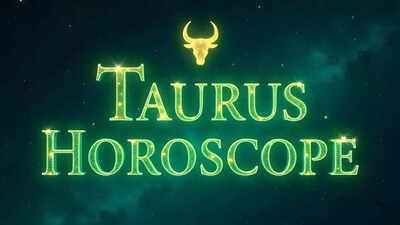Bhadra Saya on Sawan Shivratri 2025: Date, Time, Muhurat and Rituals for Jal-Abhishek

In the sacred month of Sawan, one night shines brighter than others—Sawan Shivratri, the night when Lord Shiva accepts our devotion with special grace. In 2025, this festival falls on July 23, with powerful puja rituals extending into the early hours of July 24. But did you know the day also includes Bhadra Saya, a period considered inauspicious for puja? To avoid delay, let us explore the concept of Bhadra, its timing, and how devotees can still perform Jal-Abhishek at the most auspicious moment—even amidst Bhadra’s influence.
What Is Bhadra Saya?
In Hindu Panchang (traditional Vedic calendar), Bhadra is the daughter of Lord Surya and the sister of Shani Dev. Her presence during certain time periods is believed to cause disruptions or delays in the results of any auspicious activity. When Bhadra is active—known as Bhadra Kaal or Bhadra Saya—it is advised to avoid beginning important rituals, including religious ceremonies, travel, or major decisions. The energy of this time is considered unstable and may not support the smooth flow of positive results. This year, Bhadra Saya will remain in effect from 5:37 AM to 3:31 PM on 23rd July—right on the day of Sawan Shivratri. While it does not interfere with the night-time rituals, it is essential for devotees to avoid performing Jal-Abhishek or full puja during these daylight hours, especially when the divine intention is to offer the purest devotion.
Significance of Sawan Shivratri
Shivratri is observed every month on the Chaturdashi tithi of Krishna Paksha, but Sawan Shivratri is of highest importance because the month itself is dedicated to Lord Shiva. It is believed that during Sawan, the cosmic energy is naturally inclined toward spiritual transformation. This month magnifies the effects of mantras, fasts, and acts of devotion. Devotees keep a strict vrat (fast) on this day and perform Jal-Abhishek, pouring sacred water, milk, honey, and Bilva leaves on the Shivlinga. It symbolizes the offering of one’s ego, impurities, and desires at the Lord’s feet. Observing Shivratri in Sawan not only pleases Lord Shiva but is also said to bring peace in married life, spiritual growth, removal of past sins, and inner calmness.
Shivratri Tithi and Muhurat for 2025
In 2025, the Chaturdashi tithi begins at 4:39 AM on July 23 and ends at 2:28 AM on July 24. While Bhadra Saya ends by 3:31 PM on July 23, the most auspicious time to perform the Shivratri puja and Jal-Abhishek starts after sunset and continues through the four night-time Prahars (quarters). The first Prahar begins around 6:59 PM, followed by the second at 9:36 PM, the third at 12:13 AM, and the fourth at 2:50 AM, which concludes around 5:27 AM the next morning. The most spiritually charged period, known as Nishita Kaal, falls between 12:07 AM to 12:48 AM, and is considered the ideal time for performing Abhishek and chanting mantras.
Why Bhadra Should Not Be Feared
The presence of Bhadra Saya on Shivratri day might create confusion for some devotees. However, it is important to understand that Bhadra is not “bad” energy, but rather an intense force that is best respected through patience and discipline. Just as one avoids planting delicate seeds during a storm, in the same way, we avoid auspicious beginnings during Bhadra. By simply waiting for the period to pass, one aligns better with universal harmony. Thankfully, the actual rituals of Shivratri such as Abhishek, chanting, and aarti traditionally occur at night—well after Bhadra has ended. Hence, there is no need to worry or panic. Devotees should simply refrain from performing Abhishek during Bhadra hours and focus on internal sadhana like mantra chanting or meditation until the evening begins.
Spiritual Routine for Devotees on This Day
The day of Sawan Shivratri is not only about rituals, but also about inner purification. A devotee should begin the morning by taking a holy bath, preferably with Gangajal, and wearing clean white or saffron clothes. While Bhadra is active, you may clean your puja area, prepare the samagri (items needed for puja), and chant “Om Namah Shivaya” or the Mahamrityunjaya mantra in your mind. As evening approaches and Bhadra ends, set up a Shivlinga—either at home or in a temple—and start the puja during the first Prahar after sunset. Offer water, milk, ghee, honey, sugar, curd, and Bilva leaves while chanting Shiva’s names. During the Nishita Kaal, focus your prayers on transformation, forgiveness, and gratitude. Remember, Lord Shiva does not ask for grandeur, but for sincerity and surrender.
What to Avoid During Shivratri
Devotees should maintain celibacy, avoid meat, alcohol, onions, garlic, and harsh speech. During Bhadra, do not begin rituals, but you may continue chanting quietly. One must not sleep during the night of Shivratri, as staying awake symbolizes one’s vigil toward inner purification and divine awareness.
Discover everything about astrology at Times of India, including daily horoscopes for Aries, Taurus, Gemini, Cancer, Leo, Virgo, Libra, Scorpio, Sagittarius, Capricorn, Aquarius, and Pisces. Read your detailed Horoscope Today and Horoscope Tomorrow here.







